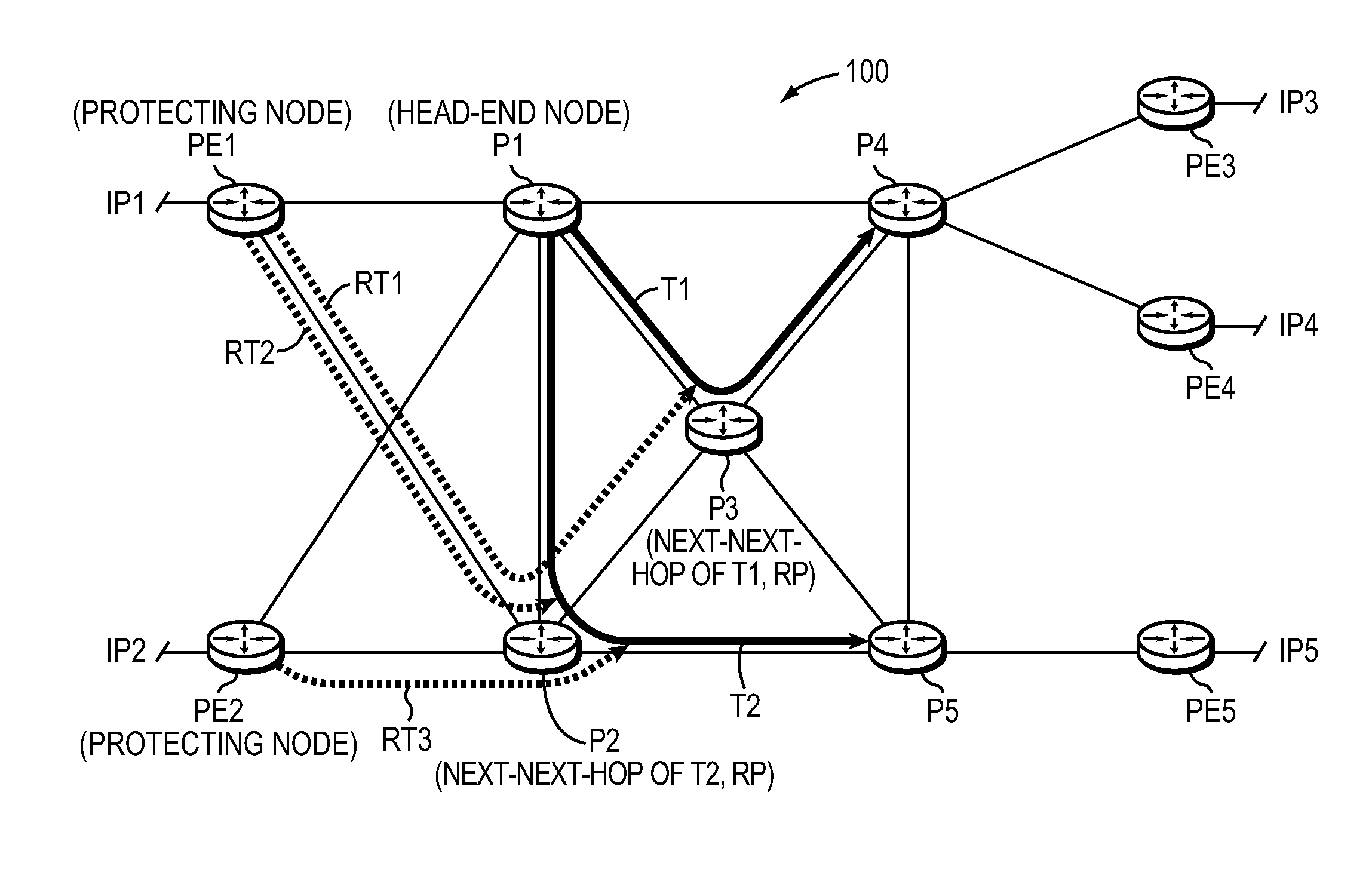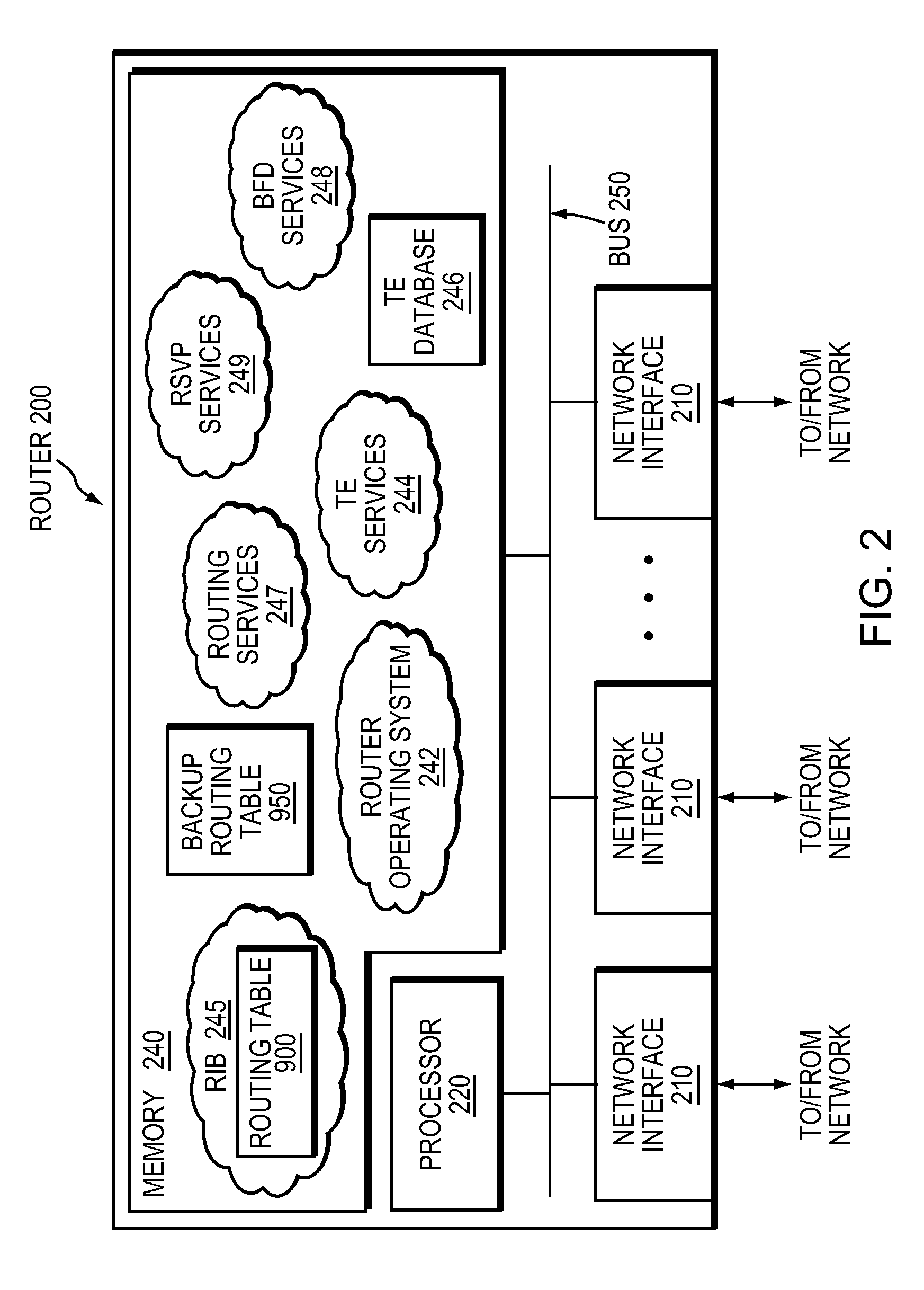Dynamic protection against failure of a head-end node of one or more te-lsps
a technology of switching path and head-end node, which is applied in the field of computer networks, can solve the problems of large number of tel-lsps throughout the network, burdensome management of interconnected computer networks, and traffic redirection, and achieve the effect of preserving scalability and increasing the recovery scope of provider node (p)-to-p tel-lsp mesh networks
- Summary
- Abstract
- Description
- Claims
- Application Information
AI Technical Summary
Benefits of technology
Problems solved by technology
Method used
Image
Examples
Embodiment Construction
[0040]FIG. 1 is a schematic block diagram of an exemplary computer network 100 comprising edge devices (provider edge routers) PE1 and PE2 interconnected to PE3, PE4, and PE5 by provider (core) routers P1-P5 (e.g., through links as shown). A core router is generally defined as a router that is part of a core or “backbone” (i.e., the collection of provider routers P1-P5) that serves as a “pipe” through which all traffic from peripheral networks must pass on its way to other peripheral networks. Because of this, the core routers (and the links connecting them) are commonly designed to accommodate a high volume of traffic, such as, e.g., links with 2.5 GB (gigabytes) or 10 GB of bandwidth (such as optical connections OC48 or OC192, respectively). The edge routers PE1-PE5 may connect to the peripheral networks, and act as access points (points of presence, POPs, e.g., possibly including provider routers) to the computer network for other devices of the peripheral networks. Illustrativel...
PUM
 Login to View More
Login to View More Abstract
Description
Claims
Application Information
 Login to View More
Login to View More - R&D
- Intellectual Property
- Life Sciences
- Materials
- Tech Scout
- Unparalleled Data Quality
- Higher Quality Content
- 60% Fewer Hallucinations
Browse by: Latest US Patents, China's latest patents, Technical Efficacy Thesaurus, Application Domain, Technology Topic, Popular Technical Reports.
© 2025 PatSnap. All rights reserved.Legal|Privacy policy|Modern Slavery Act Transparency Statement|Sitemap|About US| Contact US: help@patsnap.com



